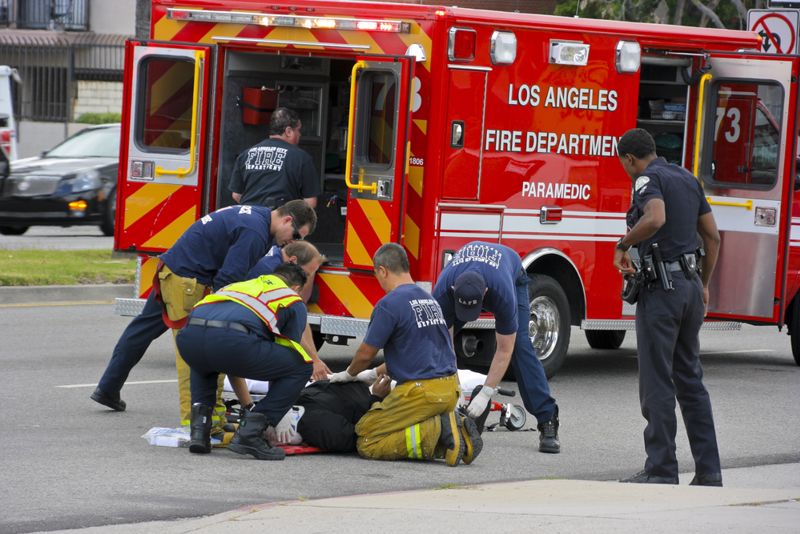The Lifeline of Emergency Response
In the throes of an emergency, the thread that often holds the chaos at bay is effective communication. It's the beacon that guides first responders through the night — the difference between confusion and clarity in high-stakes situations. When every second counts, the ability to convey critical information swiftly and accurately becomes paramount.
It's not an overstatement to say that the quality of communication can determine the outcome of life or death scenarios. This reality places an immense responsibility on the systems and protocols that facilitate such exchanges, highlighting the need for a robust and fail-proof communication network during crises.
As we delve into the intricate web of emergency communication, we'll explore the key components that ensure first responders maintain that essential lifeline of connection. From the technical infrastructure to the human skills required, we'll shed light on the multifaceted nature of communication in emergency response and the critical role it plays in safeguarding lives.

The Anatomy of Emergency Communication
Emergency communication systems are a complex network of tools, protocols, and personnel working in unison to manage crises effectively. At the heart of these systems lie various components such as alert mechanisms, communication devices, and information management platforms. Each element is designed to perform under the extreme pressures of an emergency, ensuring that vital information reaches the right people at the right time.
In addition to the physical infrastructure, communication systems also rely on established protocols — the blueprints for action, dictating the flow of information and how to respond in an emergency. Clarity and precision are essential here, as these protocols act as the guardrails that keep the response on track, preventing the descent into disorder.
Training and Preparedness: The Human Element
Of course, first responders can't rely solely on tools and protocols. Training ensures that all team members know how to use their tools and equipment and what to do in an emergency. For emergency responders, it's not just beneficial; it's a critical component of any effective emergency response strategy.
When responders are well-prepared, they can navigate the complexities of crisis communication with confidence and efficiency. Regular drills and exercises that simulate emergency conditions help to engrain best practices and ensure that when a real crisis hits, the response is almost second nature. The human element of communication—comprising skills such as clear articulation, active listening, and quick comprehension—can make all the difference in high-stakes situations.
Barriers to Effective Communication
Despite best efforts, several obstacles can impede first responder communication. There are the obvious culprits, such as noise, weather, and terrain, which can disrupt communication channels. Human factors, including stress-induced errors or lack of clarity in messaging, can further complicate the situation, making it challenging to maintain effective communication.
However, technical issues like equipment failure or network overload can lead to critical delays, and the consequences of miscommunication in emergency scenarios are dire. A single misunderstood directive or a delayed message can escalate an already perilous situation, potentially leading to increased harm or loss of life.
So how do first responders overcome these obstacles?
Technological Tools for Crisis Management
Cutting-edge communication technologies are continuously revolutionizing the landscape of emergency response. From advanced radio systems that remain operative even when traditional networks fail to software platforms that provide real-time data sharing and collaboration — they all aid in the efforts of emergency responders.
With the aid of technology, emergency response teams can synchronize their efforts, optimize resource deployment, and ultimately, save more lives. But that's not to say emergency responders are adopting technology just for the sake of it. As the National Institute of Standards and Technology (NIST) highlights in a recent first-responder survey, they want tech that:
- Offers a user-friendly, error-proof interface.
- Reduces product or service expenses.
- Minimizes unintended consequences.
For a recent example of tech that checks these boxes, look no further than the rise of Drones as First Responders (DFRs). These unmanned aerial vehicles offer eyes in the sky, giving responders a bird's-eye view of the situation.
Technological advancements like these have a profound impact on the coordination and response times during a crisis. They enable a seamless flow of information, allowing for quicker situational assessments and more informed decision-making.
Communication is the lifeline that connects all facets of crisis management, from the initial alert to the final resolution. As we look to the future of emergency response, it is imperative that we continue to innovate and refine our communication systems. This means investing in new technologies, enhancing training programs, and fostering a culture of continuous improvement.
The call to action is clear: we must prioritize effective communication in emergency response to ensure that when disaster strikes, our frontline workers remain strong, reliable, and unbreakable. Their lives and ours depend on it.

